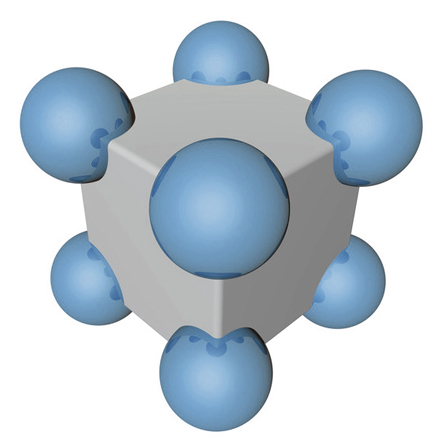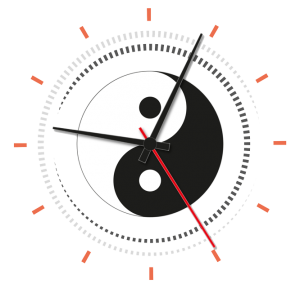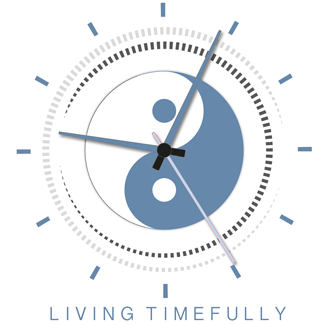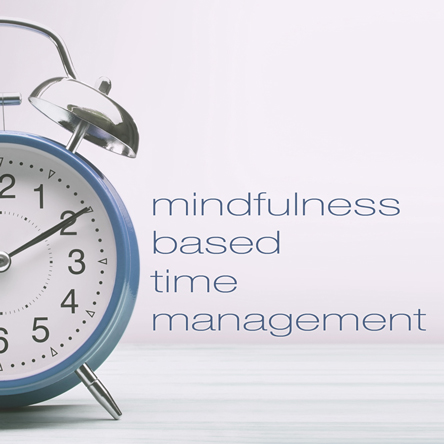by Tom Evans | Jun 25, 2014 | Expanding
 The dictionary definition of the term ‘will power’ describes it as being “control of one’s impulses and actions; self-control”.
The dictionary definition of the term ‘will power’ describes it as being “control of one’s impulses and actions; self-control”.
Diligent use and controlled direction of our will power therefore has a huge bearing on the management of our time. The reason being that the biggest stealers of our time aren’t external factors like interruption, email or social media.
The biggest time thief by far is Us.
The reason for this is that the normal human mind is only capable of having one thought at a time. Just think about what you are thinking right now and notice how the thought gets replaced by the thought about the thought. David Bohm famously postulated that when we focus on the content of a thought, we lose its direction and that when we track the direction of a thought, we lose grip on its content.
You may want to read this paragraph again to make your own mind up on this matter. Note to that there is nothing ‘normal’ about the mind. A shaman taught me how to hold on to multiple thought streams concurrently. With a little training, we can all do this which actually is a great way of getting more done with less time.
The normal singular of our thoughts has an implication on our productivity. When we are directing our will power and our attention towards a creative task, if our mind wanders off topic, our efficiency will naturally drop.
Our mind has a tendency to wander all on its own. We might wonder what we are having for supper or mull over a conversation that didn’t go so well the day before. While we are writing that sales proposal, we might want to check our emails or see what our friends are up to on Facebook.
Not All Thoughts Are Your Own
This propensity for our minds to go off course under their own volition is actually a ‘fantabulous’ ability when trained properly. Unlike any computer yet built, our mind has an amazing ability to free associate. If you say “dog”, I could say “cat” or “collar”. If I chose the former, you may say “litter” or “caterpillar” – and so forth. The direction of mind travel will be modulated by our experience, our memories, our vocabulary and our language. It is from such perambulations of the mind, we create our dreams, produce works of art and fly people to the Moon.
So how do we harness this marvelous ability? The key lies in recognising that not all thoughts emanate solely from our brain. While our brain is the cogniscent, self-aware aspect of our neurology, our mind is distributed around our whole body. Neurologists have discovered significant awareness and neurological activity in our gut and heart centers. Incidentally, MRI scanners have revealed these mind centers operate a few seconds ahead of our conscious awareness. This is why it pays dividends to trust your gut intuition.
At the same time, our big toe and ear lobes also have awareness too. The fingers I am using to type this article ‘know’ the relative position of the QWERTY keyboard. There is no time for a virtuoso violinist or pianist to control their digits. The knowledge of the music is distributed across their neurology.
This means our will is distributed too and can be directed to any part of our body. Ask your gut right now if this all makes sense and you will momentarily have moved your consciousness there. Think about your left elbow and you get transported there.
So how can we use this innate ability to help us better manage our time?
The first key lies in becoming an observer of our thoughts and noticing where they are coming from. The tendency to check emails for example might have a root in not wanting to miss out on something or because we are looking for an excuse not to do what we are currently working on. By understanding such urges, we can begin to control. Simply asking such a ‘thought’ to go away because you are busy allows the distraction to subside. Tell your email demon that you will check in when you’ve finished the current task.
The second key to mind mastery and controlling our will power involves us entering the meditative state with our eyes open. If you haven’t meditated or think it’s impossible to make your mind go quiet, just try this for a minute.
Get a spot on the wall about four feet away and stare at it for ten to twenty seconds. Then, still looking right at it, allow your attention to stray from it either side and up and down. Notice how your inner dialogue goes quiet or gets drawn down a new thread. Then after 40 or 50 seconds or so, switch to the task you have in hand and stick on it until completed, or until when the creative flow stops.
When we make our inner dialogue go quiet our will power can be fully directed at the task in hand.
When you practice this daily, you will notice two changes in your management of time. First you will start to get more done in less time. Second, external interruptions have the tendency to reduce and almost ‘wait’ until you are finished.
As it’s free to try, what’s not to like?
Originally published in Time Management Magazine – subscribe for iPad or for Android

by Tom Evans | Mar 7, 2014 | Timing
 Have you ever been in that special zone where everything happens magically and in the perfect order? The tasks at hand seem to get done easily in the time available.
Have you ever been in that special zone where everything happens magically and in the perfect order? The tasks at hand seem to get done easily in the time available.
Have you ever had a day when things don’t go according to plan? The world seems out to get you and you feel like you are pushing water uphill.
These two states of being are of course opposite ends of the spectrum and might inspire you to thing you had better improve your time management. Now the vast majority of time management systems focus on better prioritization and minimalisation of interruptions. This is a Good Thing.
There is however a completely lateral way of getting more done in less linear time and that’s to change the speed and nature of your thoughts so you become more productive and creative.
The perceived passage of time is affected by our consciousness, attention and awareness. We can make use of this phenomenon when approaching creative tasks to changing our relationship with time at a fundamental level.
Here’s five mindful hacks to get more done in less time – together they introduce a new way of being and doing – that of timefulness!

Hack #1 : Breathe Like a Baby
The life expectancy of a giant tortoise is around 120 to 140 years and an elephant lives for around 80 to 90 years. While our own life expectancy is increasing, in the Western world at least, go back 150 years and it was between 50 and 60 years. Now here’s the thing. A tortoise breathes around 4 times every minute. An elephant breathes around 8 times every minute and we breathe around 12 to 15 times every minute.
So the first tip to changing our relationship with time is to breathe more slowly. To begin we need to use our diaphragm and to do belly breaths. This of course is how a baby breathes. We’ve just got out of the habit.
Now you don’t have to do it all the time but just doing 7 to 9 deep and slow breaths at the start of the day is enough to slow things down. You can also do it before any creative task or if you have been stressed. It works especially well if you are running late for a meeting. By breathing more slowly, we ‘expand’ time.
What’s even more magical is that this technique works in groups too or when working one to one with clients. This technique costs nothing to try and it’s even possible that we can lose weight this way while increasing our life expectancy

Hack #2 : It’s Mad Not to Meditate
Before I started meditating about 10 years ago, I thought it was both a waste of time and that there was no way I could make my over-active mind go quiet. Nowadays, if I miss my morning meditation, I actually have a worse day.
It might sound counter-intuitive but by taking 10-20 minutes of ‘me time’ each day, you claw it back in bucket loads throughout the day. You become less stressed and notice serendipities. So one chance encounter can save you hours in searching for just the ‘right thing’. It’s also reckoned the health benefits alone make it worthwhile and that each minute you spend in meditation gets added to your potential longevity.
Meditation too is not about sitting in a dark room in the lotus position chanting “Om”. A walk in nature or a park is a great tonic too. Be sure to look up though as this takes the mind out of its internal chatter

Hack #3 : One Thought at A Time
The normal human mind can only have one thought at a time. So just think about what you are thinking about right now and the thing you are thinking about gets replaced with the thought you are having about that thought.
Just pause for a moment, read the above sentence again and just check the validity of this notion.
Armed with this knowledge about the way we think, this gives us the most amazing insight when it comes to our time management. If we are focused on anything else other than the task in hand, time will slip away from us.
Accordingly, these are the three main bandits time:
• Fretting over the past
• Worrying about the future
• Thinking about something else other than what you are working on
So the key to making the most of our time is to ‘get in the zone’ and focus solely on what you are doing right now. When thoughts other than the ones we want to think arrive, a simple way to make them go away is to ask them about their purpose. Great enlightenment comes from this simple task.

Hack #4 : One plus one can equal three
It is an urban myth that the left brain is logical and the right brain is creative. Both sides of our brains are involved in both activities. When it comes to time, it is now thought there is a significant difference in how each hemisphere interacts with it. It appears that the left hemisphere (for most of us) sits inside space and time and that the right hemisphere sits everywhere and ‘everywhen’ else.
When we are ‘in that zone’ what is happening is that both hemispheres are working at the same time. The left brain handles the detail while the right brain holds the whole of the work ‘in mind’.
If we get bogged down with ‘left brained’ self doubt, our productivity drops significantly. If we sit dreaming about fame and fortune, our work doesn’t get done either. To get both brains working together, just breathe through alternate nostrils five times before embarking on a creative activity.

Hack #5 : Inner Mind Time
If you have ever regretted not trusting your gut, here’s why. It is now known our gut mind, which contains more neurons that a cat’s brain, operates about 5 to 10 seconds ahead of our conscious mind. It is an active mind center involved with decision making and getting us to pay attention to what is important to us. This might be an oncoming car as we are about to step off the sidewalk or something on a web page we are scanning.
So by forming a new relationship with out gut mind, we not only save time but we can be ‘ahead of time’ too. Our gut likes to be talked to and consulted. Say ‘Hi’ to it a few times a day and ask for its advice. You will make friends with an old and faithful companion.
So, by being mind-full not mind-less, and by engaging fully with both of our brain hemispheres and our inner mind centers, we get into that space where our productivity soars. The other collateral benefit of using these techniques is that we generate an intention field which seems to stop all interruptions coming in. What’s not to like?
by Tom Evans | Jan 2, 2014 | Timing
 How was 2013 for you? Did you get everything done you wanted to get done?
How was 2013 for you? Did you get everything done you wanted to get done?
How would you like to get more done in 2014?
Well time isn’t as fixed as you might think :: when we change our mind, we change our time. Here’s seven simple ways to change your relationship with time.
One : Ending Procrastination
It is amazing how creative we can be at not getting on with the task in hand. When it comes to doing what we really should be doing, or what we would love to do, we invent excuses galore to not-do-it. In all cases, this sort of behaviour is a symptom of a deeper malaise. When we procrastinate creatively, we are masking and hiding an underlying fear. It might be a fear of failure or even a fear of success. It could be fear of the unknown or a fear of being ridiculed. Often, it has roots back to an earlier event where the wheels came off our bus.
Remove the fear and the creative spark gets redirected where it is needed.

Two : Getting in Sync
Our man-made calendar and the 9 to 5 working week, when combined with 24×7 electric lighting, has resulted in us losing connection with natural cycles. Morning people just can’t produce as well in the afternoons. Each month, the Moon orbits our planet and has a massive impact on the creative cycle. Spring-time is the perfect time to leap into action and autumn is the perfect time to harvest.
When we go with the temporal flow, we stop pushing time uphill.

Three : Kronos and Kairos
The Greeks knew this but only recently neuroscientists have re-discovered that we have two minds of time. For most people, the left brain sits inside space and time; simultaneously the right brain lives everywhere and ’everywhen’ else. Energise both hemispheres by going for a good walk, or cross crawling, or give them a task they work on together and time takes on an ethereal quality.
It is just like magic because all magic tricks are only magic until we know how the trick is done.

Four : It’s Madness not to Meditate
It is thought that every minute spent in the deep meditative state extends our longevity by an equal amount of time, or more. Not only that but our well-being and vitality improves so we lose less time being ill, or just under the weather and under-performing. What’s more, when we take 10-20 minutes of “me-time” out every day, we get it back in spades with the serendipities and chance encounters we experience by being more tuned in.
Perfect opportunities come in when we least expect them too – and always just-in-time.

Five : The Intention Field
Thoughts don’t become things, they are things. Every thought we have generates an intention field around it that sends ripples out through the collective mind that bounce back at us. Simply by engaging both hemispheres on a task, we send out a signal that we are busy. You will find the phone doesn’t ring when you are really zoned on a task in this manner.
The intention field gets generated automatically and requires no energy but a particular kind of breath – and we all have to breathe anyway.

Six : Whole Mind Thinking
Our consciousness is sited all over our body and only concentrated around major nerve ganglia. As we have billions of neurons in our brains, for most people upon awakening, our inner dialogue naturally shouts the loudest. As a result, we assume our head is where all the ‘action’ is when it comes to matters of consciousness and awareness. This has the tendency of masking signals from other important nerve centres, specifically those in our heart and our gut. From an evolutionary perspective, these mind centres are older and in some ways wiser. They also operate a few seconds ahead of our conscious awareness and they are always, always right.
When we get our head, heart and gut in alignment, we become unstoppable.

Seven : Letting Stuff Arrive
Rather than thinking we have to turn up, when you apply the six hacks above all together, all we have to do is to allow things to arrive. Life stops being a chore and we begin to enjoy a charmed existence.
Also what turns up is better than our wildest dreams and always perfectly timed.
 The dictionary definition of the term ‘will power’ describes it as being “control of one’s impulses and actions; self-control”.
The dictionary definition of the term ‘will power’ describes it as being “control of one’s impulses and actions; self-control”.






 Most time management systems quite rightly focus on goal setting, intelligent prioritisation and improved interruption management. When we see time as a finite resource, with a forward arrow, this is a pretty good strategy. It is however a left-brained, orthogonal approach.
Most time management systems quite rightly focus on goal setting, intelligent prioritisation and improved interruption management. When we see time as a finite resource, with a forward arrow, this is a pretty good strategy. It is however a left-brained, orthogonal approach.